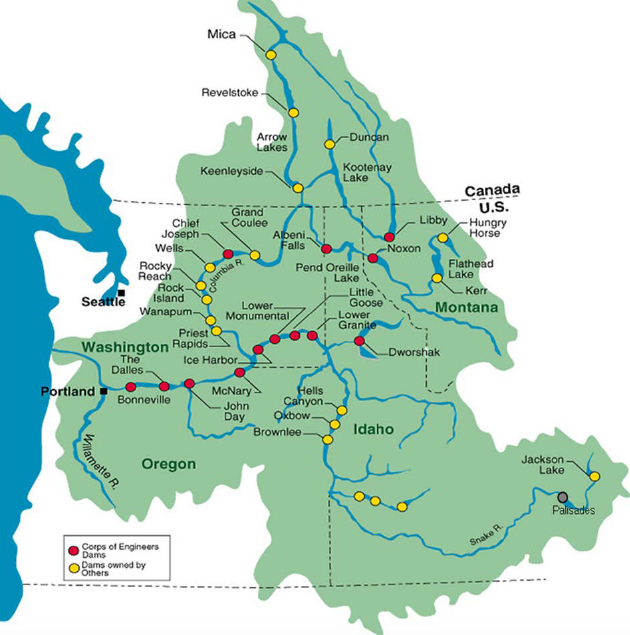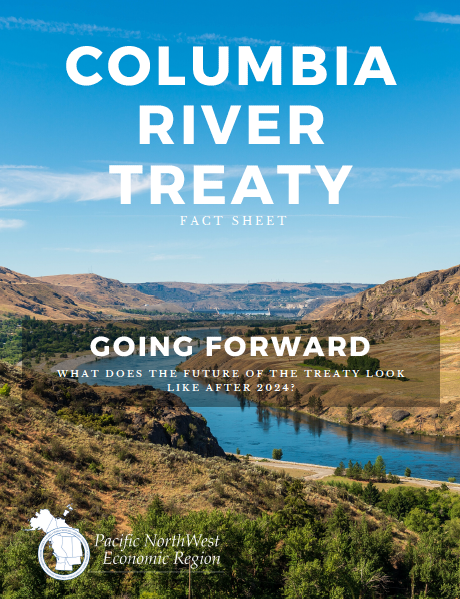|
After the devastating flood of 1948 near the City of Vanport, the U.S. and Canada partnered to create the Columbia River Treaty (CRT). This Treaty is a joint agreement concerning the development, regulation, and management of the Columbia River to coordinate flood control and maximize hydropower energy production. The Columbia River Treaty has a minimum length of 60 years that will be met on September 16, 2024, with no specified expiration date. With ten year’s notice, the U.S., Canada, or both may decide to terminate the Treaty. If neither country gives notice of termination, the countries may decide to renegotiate or consider improvements by mutual agreement at any time during the life of the CRT. With no termination, the Treaty will continue indefinitely, except for the Annual Assured Flood Control which expires in 2024. When enacted, the U.S. paid $64.4 million for the operation of the Assured Annual Flood Control through 2024 to be replaced by Called Upon Flood Control to be paid per call. What happens after 2024?The Treaty continues indefinitely; however, in 2024, the coordinated flood risk management provision changes to a less-defined approach. In 2024, the Assured Annual Flood Control will be replaced with Called Upon Flood Control. This on-call use of Canada’s reservoirs can only be utilized once the U.S. has made effective use of their own reservoir storage, and Canada must be compensated for the operational and economic cost of each flood control call. Currently, under the Treaty, U.S. and Canadian entities coordinate to maintain and adjust reservoir levels as needed and to maximize the power generated. Under the Columbia River Treaty, the U.S. pre-paid Canada for Assured Annual Flood Control until 2024, which denotes that Canada will reserve 8.45 million acre-feet of assured annual water draft at all three of their CRT reservoirs. Under Called Upon Flood Control, Canada is not required to reserve any water draft. The U.S. and Canada have different perspectives on how the called upon operation for coordinated flood risk management should be implemented after 2024. According to the U.S., the flood control can be called upon once river flows exceed 450,000 cubic feet per second (cfs) measured at The Dalles Dam and only eight storage reservoirs in the U.S. need to be effectively used before the U.S. can call Canada for flood control. From the Canadian perspective, the U.S. can request on call flood control once The Dalles dam exceeds 600,000 cfs and has effectively used all possible storage in the Basin. This ambiguous interpretation of the Called Upon Flood Control will cause implications for quick and efficient flood control. What happens if the treaty is terminated?
NegotiationsNegotiations for the Columbia River Treaty began in May of 2018. Since then seven more meetings have taken place with the most recent being in September of 2019. Researched and written by Miranda Harris Hamlin, PNWER Policy Intern. Miranda is currently a senior at Seattle University studying Economics. Resources
Download our Columbia River Treaty 4-pager
0 Comments
Your comment will be posted after it is approved.
Leave a Reply. |
Archives
August 2023
Topics
All
|
|
World Trade Center West
2200 Alaskan Way, Suite 460 Seattle, WA 98121 |
|


